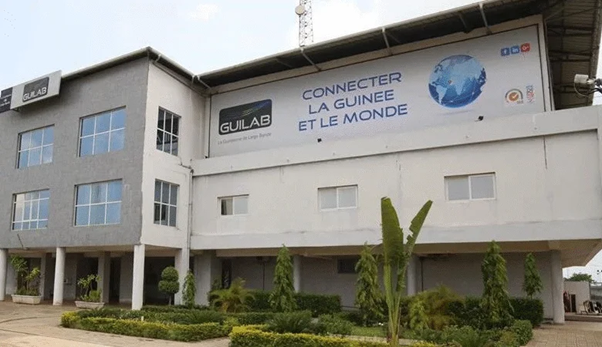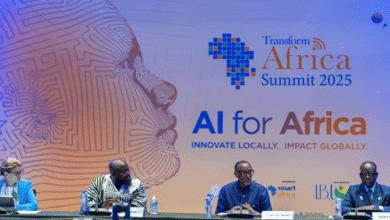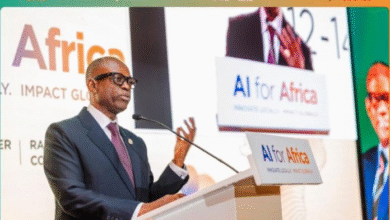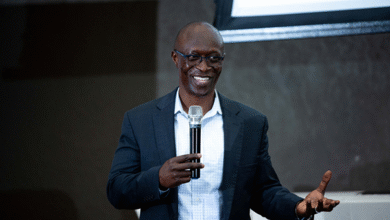Guinea : from mines to digital, a bet on the future
Long dependent on its mineral resources, Guinea is now betting on digital technology to transform its economy and strengthen its sovereignty. The 2025 Transform Africa Summit in Conakry provided the occasion to unveil Pillar 3 of the Simandou 2040 program, a symbol of this ambition.

Until recently, Guinea relied on its minerals to generate wealth. Today, it invests in its talents, ideas, and digital infrastructure to build its future. Around the Simandou 2040 mining project, “we have built a socio-economic transformation program. Today, Axis 3 focuses on technology,” explains Rose Pola Pricemou, Minister of Posts, Telecommunications, and the Digital Economy.
Strong Infrastructure to Support Transformation

Guinea has deployed an ambitious digital network: 12,000 km of fiber optic across the country, a national Tier III Data Center to ensure technological independence, and over 500 schools already connected through the GIGA project led with ITU and UNICEF. A second submarine cable is being connected with support from the World Bank, while regional interconnections are already operational with Mali, Sierra Leone, and Côte d’Ivoire, and advanced discussions are ongoing with Senegal, Liberia, and Guinea-Bissau. Each regional capital is equipped with digital hubs, real innovation and training centers for Guinean youth, while a 20-hectare national Technopole in Symphonia will host start-ups and international investors.
“Developing a program is 5%; execution is 95%. Guinea has set up a Delivery Unit to remove bottlenecks and ensure results,” recalls Maimouna Diakhaby, presidential advisor on Simandou 2040.
Human Capital and Digital Inclusion
Digital technology is becoming a cross-cutting lever, supporting education, industry, culture, and energy. Guinea invests heavily in human capital. The R-CUN program illustrates this priority: more than 300 women have already been trained in digital tools to develop their business from home, with an ambitious target of 1,500 participants this year, especially in rural areas. “These women leave with concrete projects and create a value-driven economy from their homes,” emphasizes Rose Pola Pricemou.
Guinean start-ups also benefit from technical and financial support: over 300 applications were received for the Sweden Grand Prix this year, with 10 winners to be supported. Last year, four local start-ups were awarded at the World Summit on the Information Society in Geneva, demonstrating their internationally recognized potential.
Pillar 3 of Simandou 2040: Digital Technology and Sovereignty
Pillar 3 includes 12 projects with a total investment of 3.4 billion dollars, combining digitalization, infrastructure, and industrialization. The goal is to create a robust digital economy capable of supporting local businesses, improving connectivity, and developing African artificial intelligence adapted to international standards and fueled by local data. “The constitution, if you want to read it in any language, is through AI,” notes the minister.
Guinea has established a modern institutional framework, creating agencies dedicated to digitalization, cybersecurity, and digital inclusion, along with fiscal incentives to attract investors. Cooperation with Rwanda demonstrates the country’s commitment to producing African solutions to African challenges.
Today, more than 200 public services are digitalized, mobile penetration reaches 102%, and the digital sector’s share of GDP is expected to grow from 4% to 14‑20% by 2040. These results illustrate the scale of the transformation and the country’s commitment to making digital technology a driver of inclusive growth.

According to Thierno Habib Hann, CEO of Shelter Afrique, “Digital technology is a facilitator of development. It’s not just about mines or infrastructure, but about building smart cities and an inclusive economy.” Guinea demonstrates that a country rich in natural resources can successfully diversify its economy by investing simultaneously in infrastructure, human capital, and technology. Inclusion of women, youth training, start-up support, and strengthened digital infrastructure are the pillars of sustainable transformation.
Guinea thus asserts itself as a regional hub for connectivity and innovation, illustrating how Africa can shape its own digital future, built on inclusion, innovation, and technological sovereignty.






